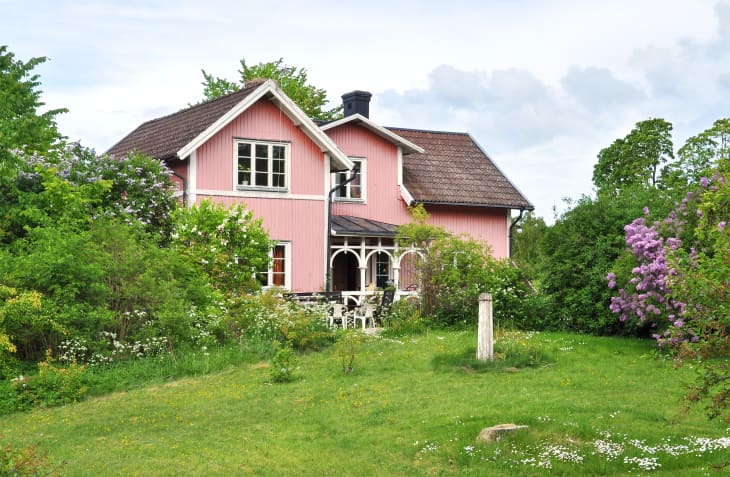5 Glaring Red Flags to Look for in a Home’s Front Yard

You’ve probably been told to consider a home’s “curb appeal,” before heading into the open house. This, of course, is an assessment of the home’s attractiveness from the street (the curb!). It’s the way the house’s facade and front yard presents to passers-by.
Nice-looking curb appeal is always a plus, but there are a few red flags homebuyers will want to take note of in a front yard. Here are five things real estate professionals across the country say to be on the lookout for.
A Lack of Gutters
Depending on the state you live in, rain gutters may not be a requirement for your home. In states like South Carolina, gutters are not mandated by building codes, according to Irina Bordyn, a real estate agent for Healthy Realty in Charleston. “We very often get gushing rain falls, so if homes have no gutters, that can cause issues by the foundation,” she says.
A home without gutters is cause for concern. And if a house does have gutters, it’s important to watch where the water drains off to. “A lot of times they’ll drop at the sidewalk, which will cause the underneath of the sidewalk to wash out, so you’ll see cracks in the sidewalk,” says Dawn Griffin with the Dawn Griffin Group in St. Louis, Missouri. The biggest red flag of all? Water rushing back toward the house.
Divots in the Lawn
Although sewer lines are underground, when there are issues with them, they can be seen in the front yard. Sewer laterals leading from your home to the city’s main sewer line often run through the front yard, according to Griffin. She warns that when there is a break in the line, wastewater may not make it to the main lateral, but instead pool below the grass.
“As it pools 10 feet below, the top of the ground softens, and in the ground you’ll see a divot, almost like a little ditch,” she says. “You’ll see the ground itself isn’t flat anymore.”
In addition to changing the grade of your yard, pooled waste water can shift or soften concrete surfaces, such as sidewalks and steps.
Tall (or Leaning) Trees
While trees are the highlight of most outdoor spaces, in some instances, they may be more maintenance than they’re worth. Debris from particularly tall trees can end up on your roof. Soggy foliage can then damage roofs made with materials such as asphalt. “It gets soggy as well, then moisture enters the house,” Bordyn says.
The Charleston real estate agent also advises against trees that lean too close towards the house. “When you have a storm and a fat heavy branch lands on the roof, that can cause damage,” she says.
Pooled Water and Decay
When inspecting a yard, don’t forget to peek at the corners of the house. Water can collect near the corners of a home, according to Moises Worthalter, a broker for Worth Real Estate Consultants Inc. in Fort Lauderdale, Florida. “That’s usually where termites come from,” he says. “Termites seek water and the water creates crevices for them to come through.”
He also advises to look for signs that a home’s owners have been dealing with a pest problem, such as remnants of termite spikes, which are inserted into the ground to detect and prevent termite activity. In short, keep an eye out for “anything that will give you insight of something that may be happening on the property,” Worthalter says.